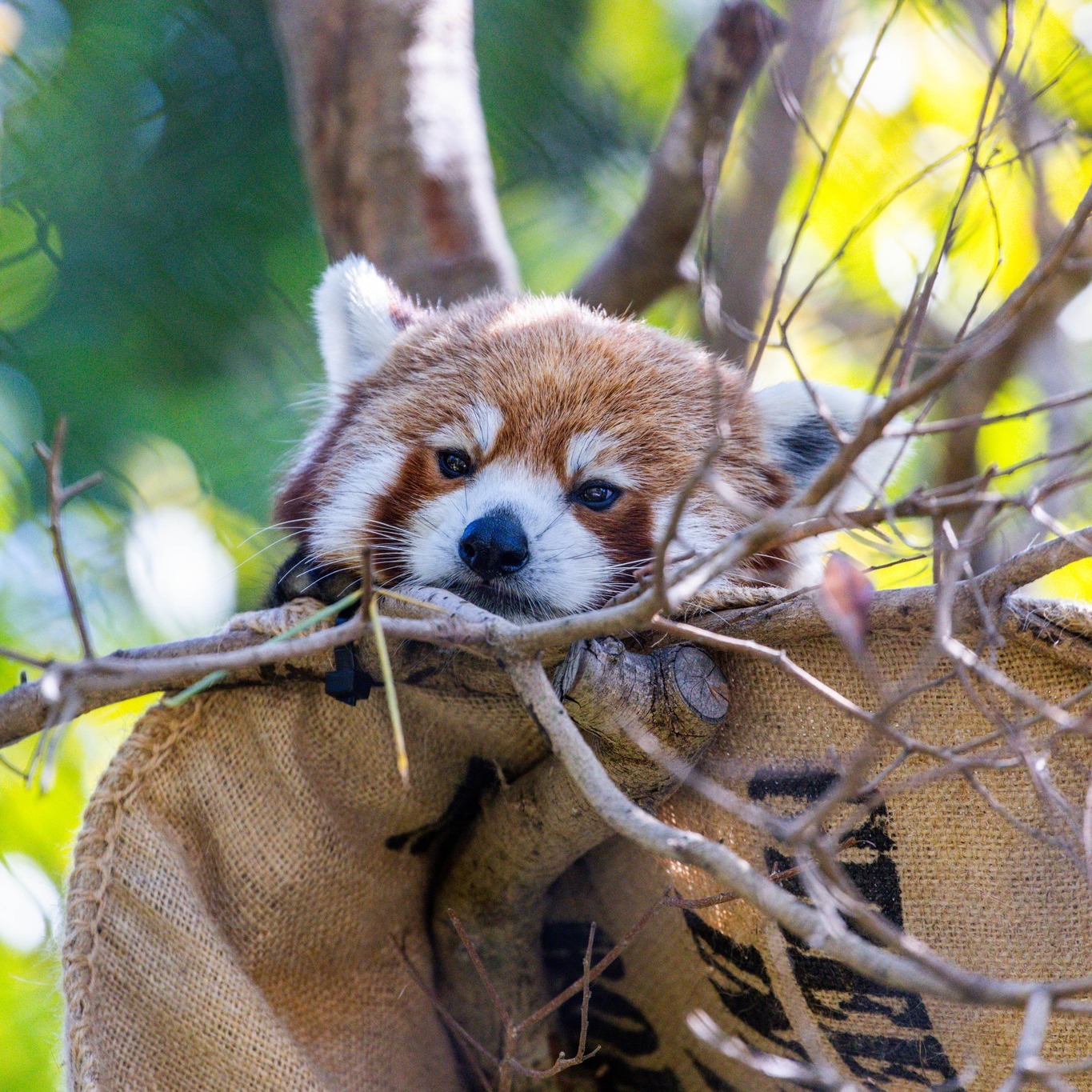- Overview of red panda biology and behavior, focusing on Raj’s characteristics.
- The significance of conservation efforts for red pandas and the role zoos play.
- Insights into zoo management practices and animal welfare best practices demonstrated by Raj’s care.
- Connection between public engagement and wildlife conservation education.
- Utilizing Raj’s sleepy habits to illustrate broader zoological behaviors and conservation messages.
Red pandas, like Raj, illustrate a unique blend of behavior and biology that captures the fascination of many. Raj, a red panda known for his love of napping, offers an engaging case study to understand red panda characteristics and conservation efforts. Red pandas (Ailurus fulgens) are small, tree-dwelling mammals with distinctive reddish-brown fur and long, bushy tails. Their inquisitive nature and gentle demeanor make them a popular subject in zoological studies and wildlife conservation programs.
Beyond Raj’s sleepy demeanor lies a sophisticated survival pattern. Red pandas are crepuscular, displaying peak activity during dawn and dusk. This behavioral adaptation aids in avoiding predators and optimizing foraging efficiency. The red panda’s diet is predominantly bamboo, despite their carnivorous digestive system—a fascinating paradox replete with evolutionary curiosity. Their specialized wrist bone, functioning as a thumb, assists them in grasping bamboo shoots effectively. Understanding these behavioral and biological traits provides a window into their evolutionary demands and conservation needs.
The conservation status of red pandas is particularly concerning. They are listed as Endangered by the International Union for Conservation of Nature (IUCN), with habitat loss and poaching serving as primary threats. Rapid deforestation and agricultural expansion in the Himalayan region have significantly deteriorated their natural habitats. Zoos play a critical role in their conservation by providing safe environments for breeding and raising awareness about their plight.
Raj’s home, a modern zoological institution, exemplifies excellence in zoo management and animal welfare. Such establishments prioritize creating habitats that mimic natural environments, thereby promoting natural behaviors, like Raj’s fondness for napping in a burlap hammock. Providing environmental enrichments is crucial for mental and physical health, fostering an environment conducive to the animals’ natural behavior. This approach underscores the importance of zoo management practices that prioritize animal welfare, offering insights into the ongoing efforts to match captive settings with wild habitats.
Zoos hold great potential as educational platforms, connecting the public to conservation issues and inspiring action. Raj’s character not only entertains but also educates. The display of red pandas, coupled with interpretive programs, underscores the importance of preserving biodiversity. By witnessing Raj’s behaviors, visitors gain insights into the role every individual can play in conservation efforts. Effective interpretation transforms visitor experiences into advocacy, urging support for habitat preservation, responsible tourism, and conservation funding.
Raj’s sleepy habits highlight broader zoological behaviors, such as energy conservation and habitat adaptation. These behaviors resonate with broader themes of conservation, drawing attention to the interconnectedness of animal behavior and environmental sustainability. By observing daily habits and nighttime activities, zookeepers gather data that enhance our understanding of red panda biology. This ongoing research is indispensable, offering novel insights that inform conservation strategies and improve captive breeding programs.
Raj’s story and his symbolic role in conservation efforts demonstrate the intersection between individual animal narratives and global conservation conversations. By bringing awareness to the threats facing red pandas, educational institutions activate conservation-minded strategies that aim to mitigate these challenges. Engagement with wildlife through the lens of individual stories, like Raj’s, has proven invaluable in fostering a global community dedicated to preserving our planet’s biodiversity.
Moreover, participation in cooperative global breeding programs helps safeguard genetic diversity, laying a foundation for potential rewilding efforts. Raj’s presence in a zoo setting is part of a broader network of international collaboration striving to balance ex-situ conservation with in-situ efforts. Collectively, these efforts aim to restore wild populations while establishing public support through direct engagement and education.
In contemplating Raj’s role, it’s vital to acknowledge that each red panda, whether in captivity or the wild, plays a part in the broader narrative of ecosystem health. The preservation of Himalayan biodiversity is indicative of the vitality of our global environment. Through public involvement and informed stewardship, the future for Raj and his wild counterparts can be safeguarded.
Ultimately, Raj’s sleepy eyes serve as a beacon for awareness and the catalyst for conservation action. As our understanding of red pandas deepens, so does our commitment to ensuring their survival. With dedicated conservation efforts, individuals like Raj continue to serve as ambassadors, bridging the gap between public fascination and tangible conservation success. Through Raj and his journey, we are reminded of the importance of every species and the interconnected nature of all life on Earth.
*****
Source Description
We ❤️ eepy Raj!
Alt-text: Raj the red panda takes a nap in a burlap hammock. We see his sleepy face peek over the lip of the burlap in the first picture. In the second, Raj’s heavy eyelids win and his eyes squeeze shut for a peaceful nap time.


